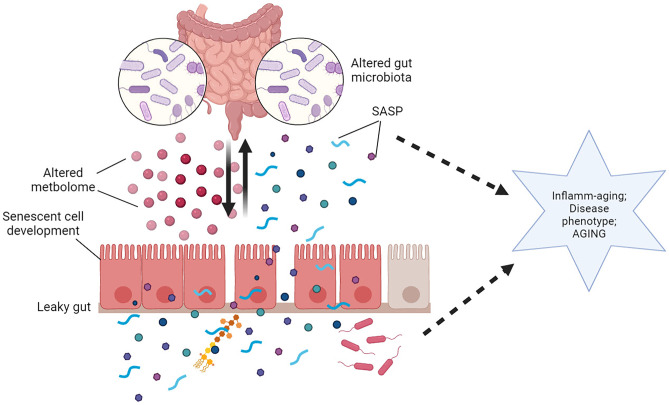- Record: found
- Abstract: found
- Article: not found
Emerging Interrelationship Between the Gut Microbiome and Cellular Senescence in the Context of Aging and Disease: Perspectives and Therapeutic Opportunities

Read this article at
Graphical abstract
The significance of diversity, composition, and functional attributes of the gut microbiota in shaping human health is well recognized. Studies have shown that gut microbiota is closely linked to human aging, and changes in the gut microbiome can predict human survival and longevity. In addition, a causal relationship between gut microbiota dysbiosis and chronic age-related disorders is also becoming apparent. Recent advances in our understanding of the cellular and molecular aspects of biological aging have revealed a cellular senescence-centric view of the aging process. However, the association between the gut microbiome and cellular senescence is only beginning to be understood. The present review provides an integrative view of the evolving relationship between the gut microbiome and cellular senescence in aging and disease. Evidence relating to microbiome-mediated modulation of senescent cells, as well as senescent cells-mediated changes in intestinal homeostasis and diseases, have been discussed. Unanswered questions and future research directions have also been deliberated to truly ascertain the relationship between the gut microbiome and cellular senescence for developing microbiome-based age-delaying and longevity-promoting therapies.

Related collections
Most cited references182
- Record: found
- Abstract: found
- Article: found
The Hallmarks of Aging

- Record: found
- Abstract: found
- Article: found
Revised Estimates for the Number of Human and Bacteria Cells in the Body
- Record: found
- Abstract: found
- Article: not found
